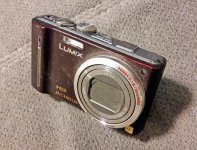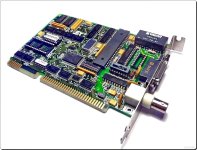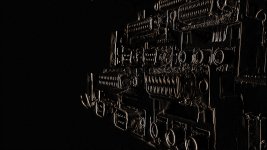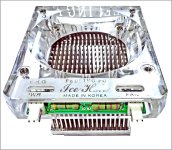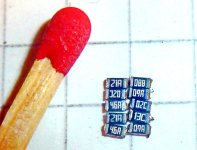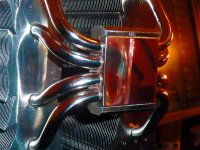Great to see someone using a digital Pentax! Pentax ME Super was my first 35mm camera. I only had a single lens back then (50mm F/2).
I still have an ME and the K2 and they are great cams. My only reason not to use Pentax digital was the lack of long lenses. With Canon APS-H I used the EF 300/2.8 L IS USM with 2x converter and with Nikon FF and APS-C the 200-500 for bird photographie. But apart from this specialty, which wasn't covered at the time, Pentax would have been great. And you just planted a thought in my head... a used K-1 would be cool!
The Pentax DSLRs are nice cameras, well built, good features. I had a K3 (APS) many years ago, which I enjoyed, but the lack of choice in lenses made me switch. With Nikon DSLRs (I'm not going mirrorless: don't need to contribute to Nikon's bottom line; don't shoot videos; don't shoot moving things; aren't inconvenienced by a mirror and a pentaprism) I have a choice of lenses from manual, autofocus, to autofocus without aperture rings, and can choose from Nikon and other manufacturers. The only lenses I can't use on my D750 and D810 are the non-ai Nikon's - everything else is fair game.I ran across a review for a Pentax K1 digital camera today. They are built like a tank and have unique features. They are big and bulky but have a nice feel in the hand. They seem to be really well priced for a full frame camera - I saw a mark I for about $800 used. Hardly ever see anyone use a Pentax Digital (made by Ricoh). I wonder why?
It’s a DSLR so optical through the lens viewfinder - which I still like if image is bright.
Pentax really shine with prime lenses and there are some quite good photographers out there that swear by them. I mainly do landscape and get some great shots with my Sigma 10-20 F3.5. The SMC 55 mm F1.4 I use for portraits (great for snapping my 3 yr old grand!) and close up nature photography. Pentax do lack the long glass of Cannon and Nikon which is a pity.
There is a Pentax FA 43mm F/1.9 limited edition pancake lens that looks like a special lens. Interesting focal length for all purpose use/street photog. I like my Lumix 20mm F/1.7 (equiv to 40mm FF) very much.

I only recently started trying to learn how to better use my Nikon D3200. I had to adjust the focus mirror stops to get better autofocus when using the viewfinder. I got a Nikkor DX 35mm f/1.8 prime lens. Anything over 200 ISO and I get grain in the midtones, so I am always struggling to maximize aperture and shutter time, and I refuse to use a tripod. I found my body tends to shake at 6Hz and this has an effect on the optimal shutter times. Some would criticize me for obsessing over grain but this gives me a lot of flexibility with the tone curve later on.
The reds are way too light in raw and it is somewhat possible to correct that with a colorchecker, but I have discovered the woes of metamerism.
Since I do almost everything on Linux I have mostly been using Darktable. I prefer to try and use the tone curve for adjusting lighting and if I sanity check myself with the defaults, I can usually get better results that way. I've noticed Lightroom seems to have better handling of colors and shadows that I can't really replicate though.
I bought an adapter for a 90s Minolta MD 50mm f/1.7 lens, but the adapter has a lens which ruins the sharpness. I need to see if I can unscrew it or if it is glued in.
The reds are way too light in raw and it is somewhat possible to correct that with a colorchecker, but I have discovered the woes of metamerism.
Since I do almost everything on Linux I have mostly been using Darktable. I prefer to try and use the tone curve for adjusting lighting and if I sanity check myself with the defaults, I can usually get better results that way. I've noticed Lightroom seems to have better handling of colors and shadows that I can't really replicate though.
I bought an adapter for a 90s Minolta MD 50mm f/1.7 lens, but the adapter has a lens which ruins the sharpness. I need to see if I can unscrew it or if it is glued in.
Sigma now makes very lenses. I have four of their Art lenses, which are superb. It was an interesting transformation for them from low/mid level glass to superlative offerings.Pentax really shine with prime lenses and there are some quite good photographers out there that swear by them. I mainly do landscape and get some great shots with my Sigma 10-20 F3.5. The SMC 55 mm F1.4 I use for portraits (great for snapping my 3 yr old grand!) and close up nature photography. Pentax do lack the long glass of Cannon and Nikon which is a pity.
If the adapter has a lens, removing it won't help. The issue is the flange distance the camera maker used, and they're all different. Check: https://en.wikipedia.org/wiki/Flange_focal_distanceI only recently started trying to learn how to better use my Nikon D3200. I had to adjust the focus mirror stops to get better autofocus when using the viewfinder. I got a Nikkor DX 35mm f/1.8 prime lens. Anything over 200 ISO and I get grain in the midtones, so I am always struggling to maximize aperture and shutter time, and I refuse to use a tripod. I found my body tends to shake at 6Hz and this has an effect on the optimal shutter times. Some would criticize me for obsessing over grain but this gives me a lot of flexibility with the tone curve later on.
The reds are way too light in raw and it is somewhat possible to correct that with a colorchecker, but I have discovered the woes of metamerism.
Since I do almost everything on Linux I have mostly been using Darktable. I prefer to try and use the tone curve for adjusting lighting and if I sanity check myself with the defaults, I can usually get better results that way. I've noticed Lightroom seems to have better handling of colors and shadows that I can't really replicate though.
I bought an adapter for a 90s Minolta MD 50mm f/1.7 lens, but the adapter has a lens which ruins the sharpness. I need to see if I can unscrew it or if it is glued in.
Nikon and Pentax SLRs have a fairly long distance which makes it difficult to adapt other lenses to them. In contrast, the Canon FD flange distance is short so that it is easy to adapt other lens, which need a greater distance, to them
Just some pics. I'm not a hobby photographer, but I photograph my hobbies. My camera is an old Panasonic Lumix DMC-TZ10, with which i took for sure more than 10000 photos. The pics are mostly reworked, most less, but some pretty much. Sometimes i like to play around with the effects the rework software offers me.
Most pics are from collecting vintage PC-parts, some newer from diy audio-electronics. First pic is my camera, then from old to new.
Most pics are from collecting vintage PC-parts, some newer from diy audio-electronics. First pic is my camera, then from old to new.
Attachments
I take it I have 2 options, use the lens with the teleconverter at the correct focal length, or use it without the teleconverter at the wrong focal length, and in either case get optical errors.If the adapter has a lens, removing it won't help. The issue is the flange distance the camera maker used, and they're all different.
I was able to remove the adapter lens. Looks like it might as well be a macro lens. Macro bokeh?
That's the usual issue - can't focus at infinity.I was able to remove the adapter lens. Looks like it might as well be a macro lens. Macro bokeh?
Some of those modern Pentax primes I thought were very expensive. The Pentax SMC 55mm I mentioned earlier was pretty reasonable by comparison. The pancake lens look hilarious on a big camera but they sure work well.There is a Pentax FA 43mm F/1.9 limited edition pancake lens that looks like a special lens. Interesting focal length for all purpose use/street photog. I like my Lumix 20mm F/1.7 (equiv to 40mm FF) very much.
View attachment 1306676
I thought $440 for a 43mm F/1.9 prime is a bit over the top. Not quite Leica prices yet but almost.
Thats the cool thing about APSC and M43. I know it’s a smaller image circle. But I just ordered the equivalent FF 50mm of a nice all metal lens from TTartisans 25mm F/2.0 for $55. The reviews on this lens are excellent. A real sharp and quality lens.

Thats the cool thing about APSC and M43. I know it’s a smaller image circle. But I just ordered the equivalent FF 50mm of a nice all metal lens from TTartisans 25mm F/2.0 for $55. The reviews on this lens are excellent. A real sharp and quality lens.
Can someone tell my why Nikon has gone nuts and made the 50mm F/1.2 Z lens the size of a 200mm F/2 lens and $1900? Seriously?

Who would want to walk around with a 50mm that is this big? I thought the Z mount was supposed to make things smaller since they got rid of the mirror box?
Who would want to walk around with a 50mm that is this big? I thought the Z mount was supposed to make things smaller since they got rid of the mirror box?
You raise a good point.The older Nikkors (I'm referring to the manual focusing, knurled metal focusing ring, lenses) are incredibly well built and compact. (As were the Pentax Takumars and Minolta Rokkors) Since then autofocus, lenses keep getting larger to the point that they negate the compactness of mirrorless bodies, yet in many cases are less better made. ( Ask a camera repair person if you question that)
I heard a rumor that regulations on lead and other things are causing manufacturers to try to make lower quality glass work, resulting in bulkier and more complex lenses. Seems a bit silly though.
All I want is a 35mm prime lens with a wide aperture that also has stabilization, but for some reason they don't seem to exist.
All I want is a 35mm prime lens with a wide aperture that also has stabilization, but for some reason they don't seem to exist.
It's probably because image stabilization makes most sense for longer focal lengths with smaller apertures requiring longer exposure times, exceeding the recommended 1/(focal length) rule of thumb.but for some reason
With 35 mm it's possible to shoot 1/30 s handheld without much shaking blur. Combined with f/1.2 and a reasonably high iso there is no need for image stabilization, except for very, very special cases.
Also, big aperture leads to heavier glass that would need to be moved quickly for stabilization, so the stabilizing mechanism is getting bigger and heavier. In addition the glass needs to be even bigger to allow stabilization (bigger image circle required).
And most camera manufacturers recently include in-body-stabilization, which can be combined with stabilized lenses but works also well with unstabilized glass.
All the new camera bodies have built in 5 axis stabilization. Even earlier bodies from Olympus in M43 from 2018 have this. They are quite affordable used.I heard a rumor that regulations on lead and other things are causing manufacturers to try to make lower quality glass work, resulting in bulkier and more complex lenses. Seems a bit silly though.
All I want is a 35mm prime lens with a wide aperture that also has stabilization, but for some reason they don't seem to exist.
ROHS could well be the reason the glass is bigger and heavier. The 50mm F/1.2 Z Nikon has 17 elements! That’s a lot of extra surfaces for reflections. Usual formulas are 7-8 elements.
I have stabilization on all my gear. It's called a tripod. 😁
